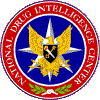
|
National
Drug Intelligence Center North Florida High Intensity Drug Trafficking Area Drug Market Analysis June 2007 TransportationThe North Florida HIDTA region is a significant transit area for illegal drugs destined for drug markets throughout Florida as well as for drug proceeds returning to source areas. Interstates 10 and 95, two primary national drug corridors, intersect in Jacksonville, the region's primary drug market. The region's significance as a transit area for Florida drug markets is largely due to the emergence of Atlanta as a national-level drug distribution center. Atlanta has now become the primary source for cocaine, ice methamphetamine, and marijuana distributed in northern and central Florida and has emerged as a secondary source for these drugs in South Florida. Additionally, high-potency marijuana cultivated in the HIDTA region is transported short distances to retail distribution sites.
Significant quantities of illicit drugs, primarily commercial-grade marijuana, are regularly seized in the North Florida HIDTA from packages shipped through commercial delivery services, and law enforcement officials in the region report that use of this transportation method by traffickers may be increasing. A large volume of packages are shipped to the Jacksonville metropolitan area, where several international shipping companies have large regional distribution facilities. Packages are then rerouted to locations throughout northeastern Florida and southern Georgia. North Florida HIDTA-sponsored task force officers based in Jacksonville typically seize multipound to multihundred-pound quantities of marijuana and, increasingly, ounce to multipound quantities of cocaine from packages that arrive from locations outside the HIDTA, predominantly from Southwest Border states. The potential for drug transportation through the Port of Jacksonville is significant; however, the extent to which the port is used for drug smuggling is largely an intelligence gap. The Jacksonville Port Authority is an international trade seaport in northeastern Florida. JAXPORT has multiple cargo terminals capable of handling container, automobile, bulk, breakbulk, and refrigerated cargo as well as cruise passenger service. Companies doing business at Jacksonville's seaport employ more than 7,000 workers and support an additional 38,000 jobs in Jacksonville. The Port of Jacksonville transships more than 70 percent of U.S. waterborne commerce to and from Puerto Rico, which is a substantial transshipment point for cocaine and heroin destined for the continental United States. Most of this cargo is not inspected, since it is being shipped within the United States. U.S. Coast Guard officials report investigating several smuggling organizations that operate between the Port of Jacksonville and Puerto Rico. The volume of commerce with Puerto Rico is expected to increase when construction at the expansive Port of the Americas, located in Ponce, Puerto Rico, ends in 2012. Moreover, the JAXPORT cruise ship terminal is scheduled to be redeveloped into one of the largest cargo seaport terminals on the East Coast of the United States. This redevelopment will further increase maritime traffic and personnel and will quite likely offer DTOs and criminal groups an increased opportunity for maritime drug smuggling. |
